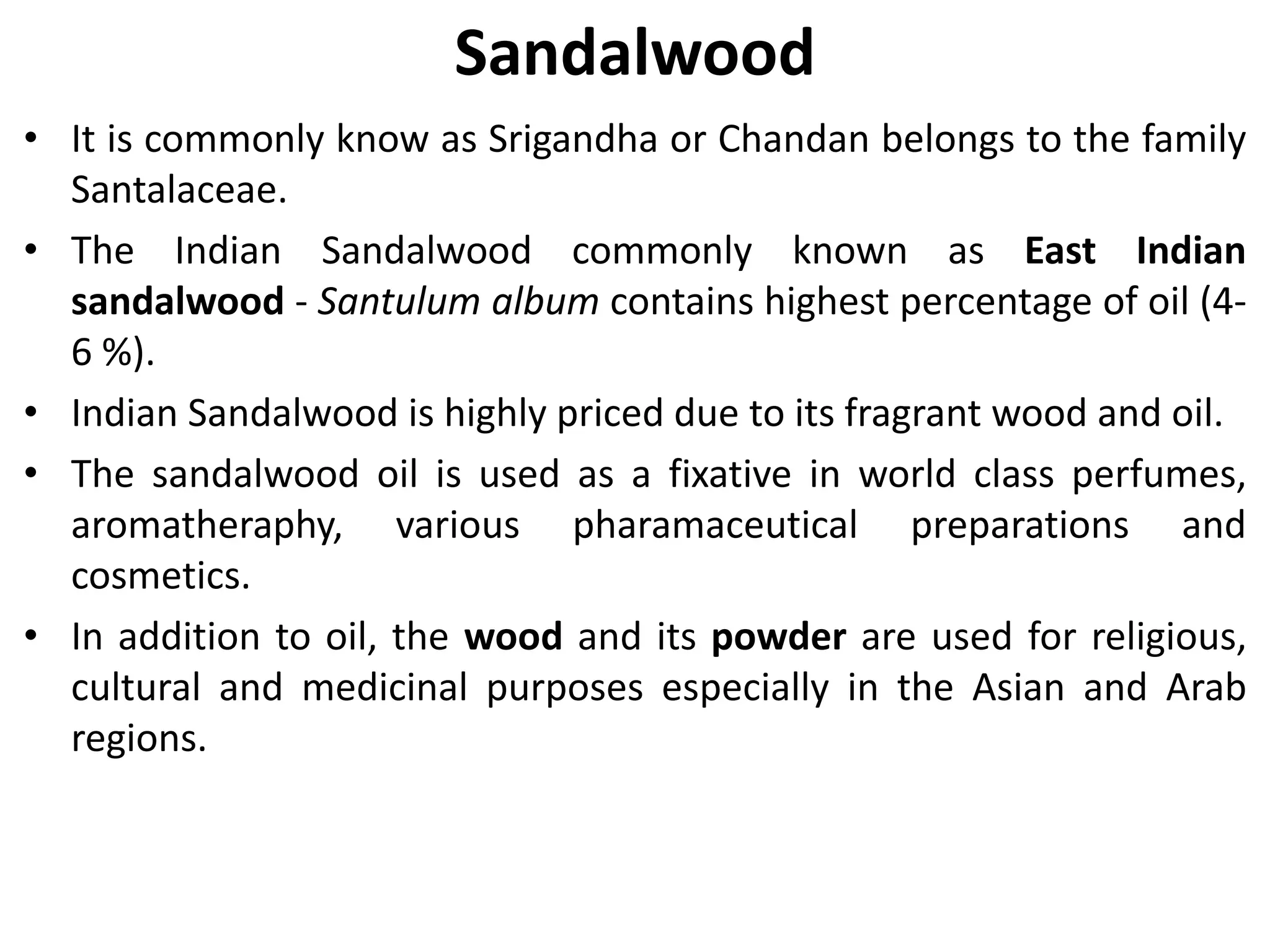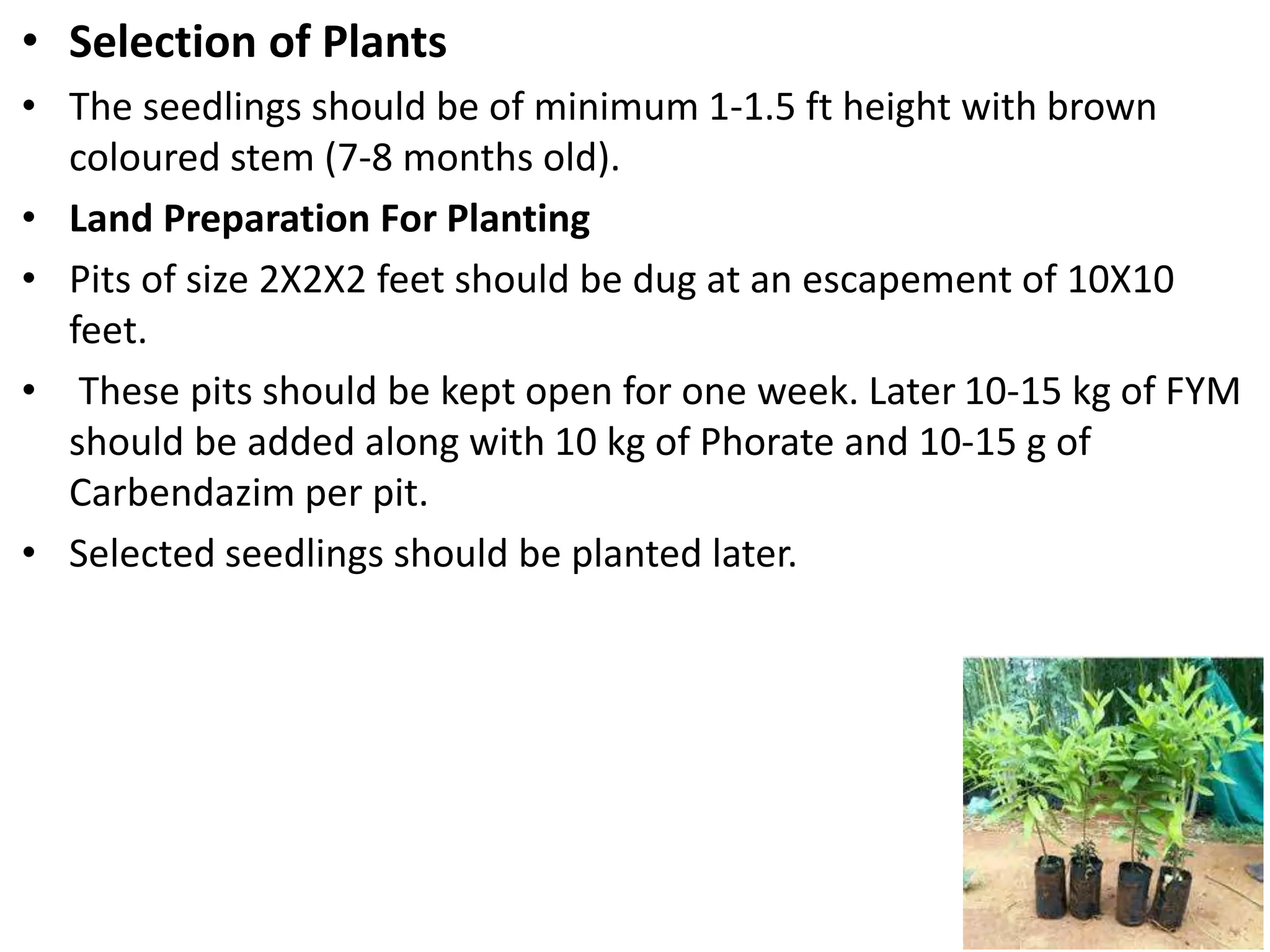Sandalwood is a highly valued tree known for its fragrant oil. It is native to southern India and Southeast Asia. The oil is 4-6% of the heartwood and is used in perfumes, aromatherapy, and pharmaceuticals. Sandalwood is a hemiparasitic tree that requires a host plant. It grows best in well-drained soil in a hot, humid climate between 600-1050 meters elevation. Proper cultivation practices include selecting an appropriate host at planting, irrigation, and pest and disease management. Mature trees 30-70 years old with a girth over 40cm can be harvested for their heartwood, which is steam distilled to extract the fragrant oil.






















